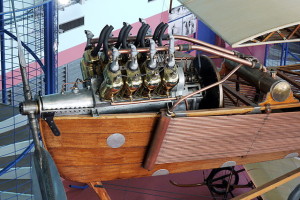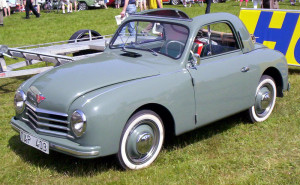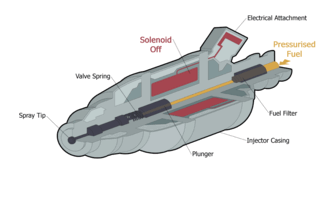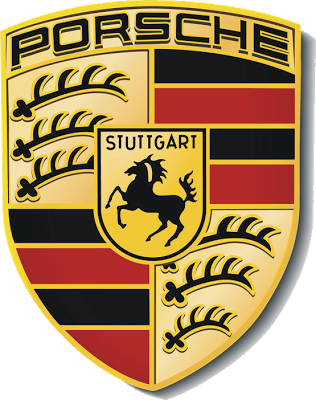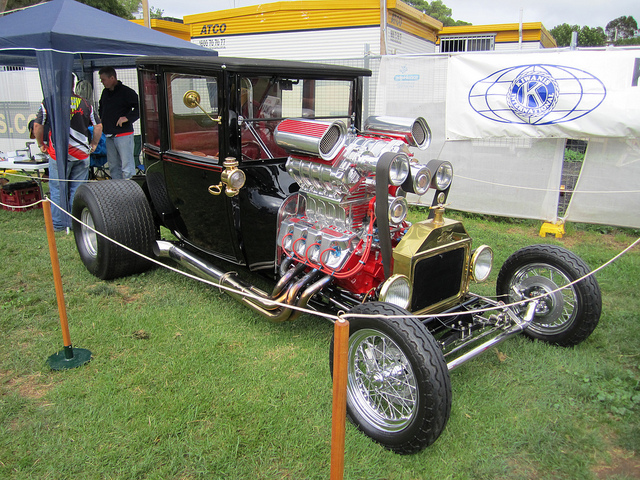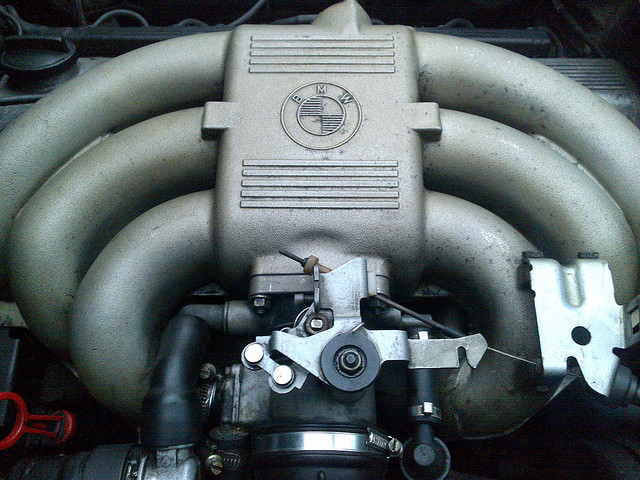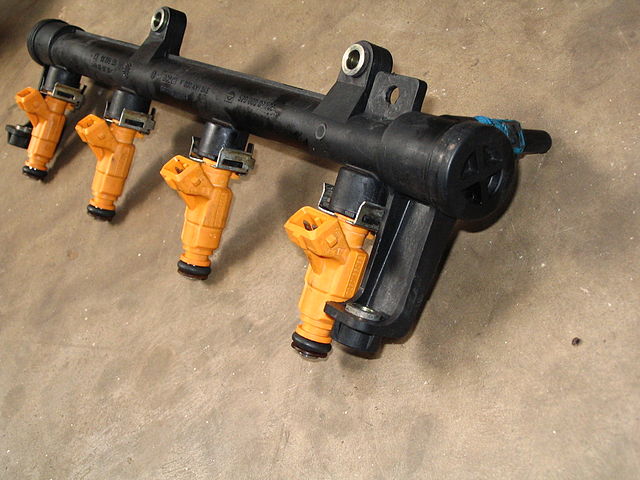What is Fuel Injection?
Fuel injection is the most common method that modern internal combustion engines use to deliver fuel. It can be contrasted with carburetion, which is a technique that was dominant from the early days of the automobile right up until the 1980s. Fuel injection utilizes higher fuel pressures than a carburetor in order to pump small amounts of gasoline, diesel, or other fuels through injector nozzles, which effectively atomizes the fuel into fine mist.
This atomized fuel can be introduced directly into a combustion chamber (direct injection), into an intake manifold near the intake ports (multi-port injection), or into the intake manifold via the throttle body (central port injection). Since the fuel is atomized into a fine mist, it readily mixes with air from the intake, which acts as an oxidizer in the process of combustion.
Contents
History of Fuel Injection
Although the general public often sees fuel injection as a relatively recent innovation, it has actually been around for over a century. Carburetors reigned supreme until the 1980s, when fuel injection took over primarily due to emissions regulations and concerns over fuel economy.
Carburetors vs. Fuel Injection
In order to understand the early history of fuel injection, it’s important to understand the fundamental difference between a carburetor and a fuel injection system. In essence, a carburetor is a device that mixes air and fuel with the aid of something called the “Venturi effect.” Fuel injection, on the other hand, relies on the atomization of fuel by forcing it through a nozzle at high pressure. This may seem like a fine distinction, and it is. In fact, a lot of fuel systems that fit our modern definition of “fuel injection” were called carburetors (or “pressure carburetors” when they were actually in use.
For instance, one of the first mass-produced, gasoline injected engines ever devised was French engineer Leon Levavasseur’s Antoinette 8V. This gasoline-injected aircraft engine was first produced in 1907, and some sources list the fuel system as “carbureted.” However, Levavasseur’s system used a method of fuel vaporization rather than relying on the Venturi effect like fuel-delivery devices that we consider to be carburetors in a modern context.
Although carburetors remained popular in both automotive and aircraft applications for a long time, fuel injection gained an early foothold in diesel engines. By the 1920s, most automotive diesel engines were already using fuel injection, which is a practice that has persisted into the present day.
Mechanical Fuel Injection
Early experiments with both mechanical and electronic fuel injection in automotive applications as early as the 1940s (including an electronic system devised by Alpha Romeo and mechanical injection designed by hot rod legent Stuart Hilborn) but most systems were mechanical in nature. One of the earliest examples of a commercially successful system was introduced by Bosch in 1952. This mechanical fuel injection system was essentially a modified diesel injection system that had a throttle plate added.
Various OEMs, including Mercedes-Benz and Chevrolet, also introduced their own mechanical systems in the 1950s, and a handful of different systems appeared through the 1960s and 1970s. However, mechanical fuel injection failed to ever really catch on.
Electronic Fuel Injection
Although the first electronic fuel injection system in an automotive application showed up in the 1940s, this type of fuel injection wasn’t commercialized until the late 1950s. AMC’s Rambler Rebel was the first commercial foray into electronic injection, which was provided by Bendix’s Electrojector system. This was followed by a number of Chrysler models in 1958, which also used the Electrojector. However, neither instances of Electrojector EFI were ready for prime time, and only a handful of pre-production Rambler Rebel and Chrysler vehicles were ever equipped with it.
Throughout the 1960s and 1970s, a number of OEM and aftermarket companies experimented with their own electronic injection systems. Bosh introduced its D-Jetronic system in 1967, which was used by a number of OEMs (including Volkswagen, Porsche, and others). Bendix also continued to work with various OEMs on its own systems, and a number of Japanese OEMs jumped on board with their own EFI systems in the 1970s.
The Rise of Fuel Injection
By the tail end of the 1970s, the federal government of the United States had started to issue regulations regarding exhaust emissions. Some state legislatures (particularly in California) also started to impose their own exhaust regulations. This led to the adoption of computer controls, but it also resulted in an industry-wide sea change in regards to fuel delivery systems.
Although carburetors were generally cheaper to design and manufacture than fuel injection systems, fuel injection provided a way to cut down on exhaust emissions. Since this coincided with the availability of more advanced electronic controls, fuel injection began a process of rapid evolution in the late 1970s and early 1980s. Some OEMs continued to use (increasingly byzantine) carburetor systems until the 1990s, but nearly all gasoline engines use fuel injection today.
How Does Fuel Injection Work?
The basic principles of fuel injection are relatively simple. Rather than relying on the Venturi effect to mix air and fuel together, fuel injection utilizes high pressures to spray fuel through a valve. When the fuel passes through the valve, it is atomized into a fine mist due to the pressure and the constriction of the valve. That allows it to mix readily with air from the intake system.
In practice, fuel injection is significantly more complicated than that basic explanation, and the precise operation of these systems can vary somewhat from one application to another. There are dozens of different fuel injection systems that each have their own unique quirks, but they all rely on the basic idea of using high pressure to atomize the fuel mixture.
Components of a Fuel Injection System
Although the exact components of a fuel injection system can differ somewhat depending on the specific design, most modern EFI systems consist of a few basic parts. The main components of a typical fuel injection system include:
- high pressure fuel pump
- fuel injectors
- fuel pressure regulator
- engine control unit
- input sensors
The entire system hinges on a fuel pump, which is capable of generating much higher pressures than you’ll find in carbureted fuel systems. This pressure is controlled by a regulator and provided to one or more injectors. There may be a single injector (typically located in the throttle body or plenum), or multiple injectors, but they all perform the same basic function of atomizing the fuel.
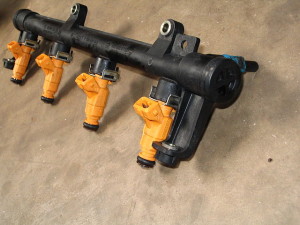
Fuel injectors are often connected to a fuel rail that delivers fuel and helps secure them in place.
In order to control the injectors and activate them at the right time, the ECU typically performs an essential function. Inputs from a number of sensors (i.e. cam and/or crank position, mass air flow (MAF), manifold absolute pressure (MAP), etc, are all used to calculate the amount of fuel that the engine needs. The ECU then activates electrical solenoids in the injectors to open and close them.

